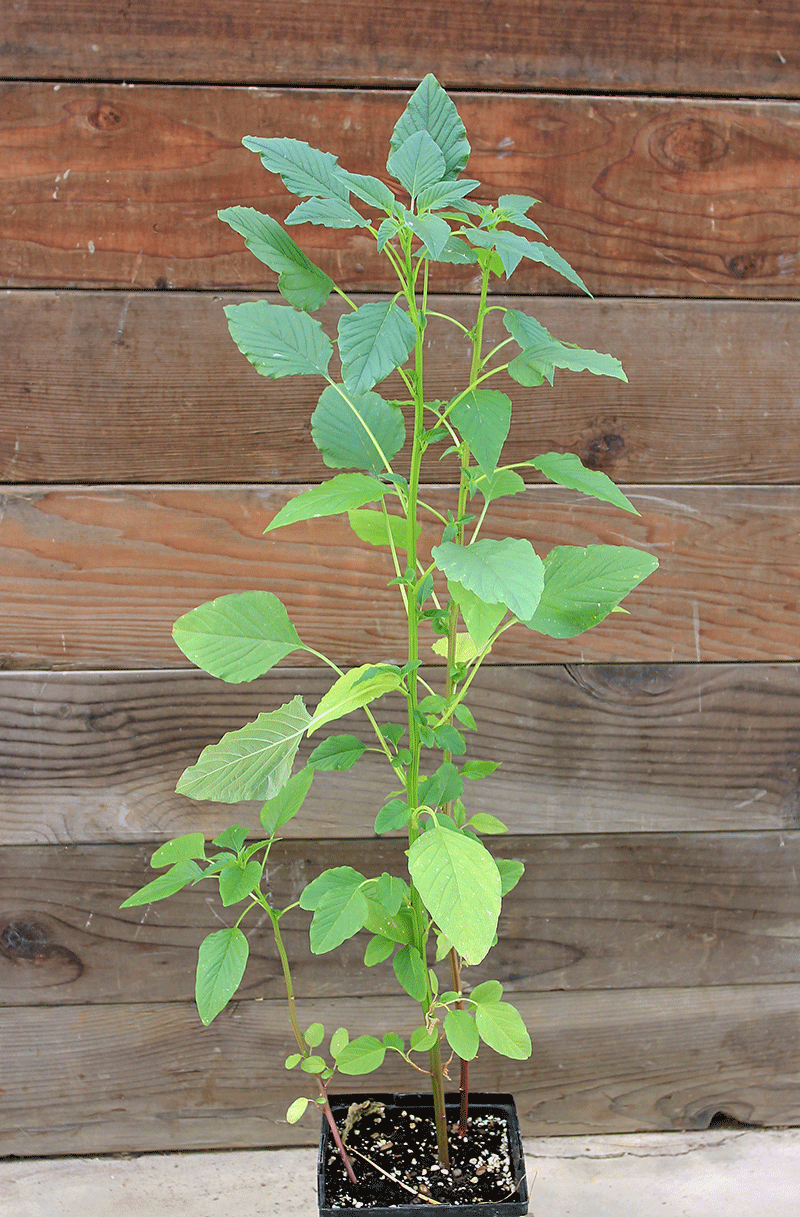The resistance movement
IT’S ABOUT MORE THAN GLYPHOSATE
WEED EXPERTS AT Iowa State University (ISU) are warning farmers in the U.S. Corn Belt that herbicide resistance is not just a glyphosate issue that can be solved by turning to other herbicides. It’s a warning farmers in Ontario should heed as well.
PHOTO: PALMER AMARANTH.

“The relative frequency of fields with herbicide-resistant weeds continues to increase, and the intensity of those weed populations also increases,” says Micheal Owen, a weed specialist at Iowa State University. “When you see weeds in August and September above the crop canopy, there’s a greater likelihood that those weeds are resistant to one or more herbicides,” he warns.
In such cases, multiple resistance is the norm according to field studies by ISU researchers. Of the nine recognized herbicide groups, scientists have now documented waterhemp resistance to six groups spread across 18 U.S. states:
• Group 2 – ALS inhibitors such as Classic or Pursuit
• Group 4 – auxin receptors such as 2,4-D and Clarity
• Group 5 – photosystem inhibitors like atrazine and metribuzin
• Group 9 – EPSP inhibitors (glyphosate)
• Group 14 – PPO inhibitors such as Flexstar and Cobra
• Group 27 – HPPD inhibitors like Callisto and Laudis
“The most common resistance is to ALS inhibitors,” Owen says. “If you see a strong growth of waterhemp late in the growing season, 50 per cent of those populations are likely to demonstrate resistance to glyphosate or atrazine.”
For HPPD inhibitors, ISU studies suggest as much as 27% of weeds may show resistance. In Iowa, resistance to groups 14 and 27 is still limited, making them effective in many fields, but experts see it increasing, driven by their heavy use in seed corn production.
For farmers facing weed problems in late summer, Owen offers some suggestions.
“The best thing they can do is remove those weeds in whatever fashion works,” he says. “Hand-weed them, combine around them, then come back and combine them later, whatever it takes to keep them from spreading. Most weed seeds will still be attached to the mother plant in August.”
“The worst thing they can do is shrug their shoulders and combine through those patches,” he warns. “There has never been a better implement to evenly and widely disperse weeds than the mechanical harvester. It’s the main way infestations spread.”
Owen also warns farmers about livestock feeding choices with implications for weed management, citing how cotton gin trash in cattle rations has contributed to Palmer amaranth outbreaks in Illinois, Indiana, Michigan, and Wisconsin.
Finally, farmers facing resistant weeds need to think differently about weed management, Owen says.
“Whatever you’ve been doing, don’t do it anymore. You need to look at the kind of resistance you have, so you can choose appropriate herbicides, and you can’t limit yourself to herbicides. You need to look at other tactics such as cultivation, rotation, and cover crops to break down the pattern.”
He notes especially the importance of cleaning equipment: “You need to know where your combine has been.”
Other options for control can include narrow row spacing and hand weeding. Late flushes of waterhemp in August and September are not likely to affect that year’s crop yields but they will increase the bank of weed seeds going into the next year, especially for plants like waterhemp that can produce some 250,000 seeds per plant.
A larger seed bank is likely to mean higher herbicide costs in the following season, and it increases the chance for mutations that can create more herbicide resistance. Finally, experts warn that once the seed bank is full, tillage will no longer control weed problems.
“There are no new herbicides with novel sites of action available now or in the foreseeable future,” Owen warns.
WORSE THAN WATERHEMP?
Palmer amaranth, another member of the pigweed family, may pose even greater problems than waterhemp. The potential yield loss when Palmer amaranth competes with soybeans throughout a season is estimated at 79 per cent (compared to 44 per cent for waterhemp).
Like waterhemp, Palmer amaranth thrives well under no-till or reduced-till systems, growing as much as two to three inches per day. That makes timely application of post-emergence herbicides more difficult.
Herbicide-resistant Palmer amaranth has been confirmed in herbicide groups 2, 3, 5, 9, and 27 across the U.S. Corn Belt from Ohio and Michigan to Nebraska and Kansas. Nine states have multiple-herbicide resistant Palmer amaranth. •






















